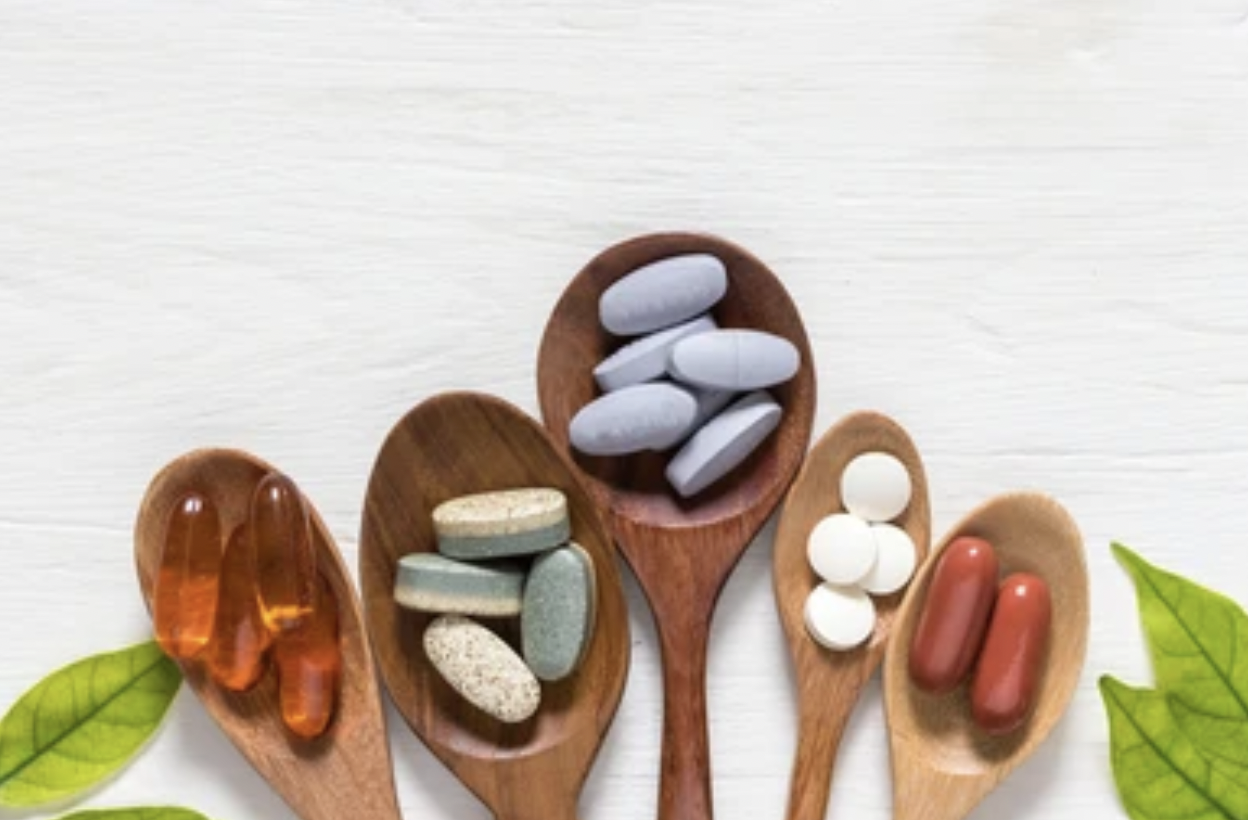Navigating the world of nutrition is like setting sail on a vast ocean with a compass but no map. Every new study is a beacon of hope or a siren’s call, and every new fad diet a gust threatening to topple you. For those with diabetes or anyone keenly monitoring their blood sugar levels, the waters are even more treacherous. While vegetables are generally considered a cornerstone of a healthy diet, not all veggies play nice with your blood sugar.
In this article, we’ll sort through the leafy greens and root vegetables to find the ones that may surprise you as the five worst veggies for those with erratic blood sugar, and we’ll finish off with the five BEST veggies for diabetics as an extra bonus. Understanding how these vegetables can impact your blood sugar can help you make more informed choices about what ends up on your plate. But first…
Understanding the Glycemic Index (GI)
Before we introduce these five vegetables, it’s important to understand what the glycemic index is and its significance for those managing diabetes. The GI measures how quickly a carbohydrate-containing food raises blood sugar levels. Foods are ranked on a scale of 0 to 100. The higher the number, the greater the blood sugar spike. Low-GI foods (those below 55) are digested more slowly, causing a gradual rise in blood sugar levels, which is safer for diabetics.
The Importance of Low-GI Foods
For diabetics, consuming low-GI foods is crucial as they help keep blood glucose levels in check. This can reduce the risk of heart disease, improve the body’s sensitivity to insulin, and aid in weight management. Vegetables are excellent sources of low-GI foods, and certain ones are particularly beneficial for those with diabetes. Below are the top 5 veggies with a very high glycemic index that can cause erratic blood sugar.
1) Beets: The Double-Edged Root
Beets are vibrant, earthy, and delicious, cooked or raw. But their natural sweetness hints at their glycemic impact. Beets have a high glycemic index (GI), which means they can cause a rapid spike in blood sugar levels. For those with diabetes or struggling with blood sugar control, beets can be a tricky veggie to manage. However, the complexity doesn’t end there. Beets are also rich in nitrates, which have been linked to improved blood flow and heart health. The key here is moderation and pairing beets with foods that have a lower GI to help mitigate their effects.
2) Parsnips: The Surprisingly Sweet Sibling of Carrots
Parsnips are often overlooked in the produce aisle but are a staple in many classic dishes. When roasted, their caramelized sweetness rivals that of sweet potatoes. However, this makes parsnips another high-GI vegetable to be cautious of. They contain more starch than carrots, which contributes to their glycemic load. For individuals with diabetes, consuming parsnips is not off-limits, but portion control and pairing with protein and healthy fats can help slow the absorption of glucose.
3) Pumpkin: Not Just for Pie
Pumpkins are packed with nutrients and low in calories, making them an attractive addition to any diet. However, like parsnips, pumpkins have a higher GI than most non-starchy vegetables. This is especially true for canned pumpkin or pumpkin pie filling, which often contains added sugars and other high-GI ingredients. Choosing fresh, whole pumpkin when possible and preparing it in ways that do not add extra sugar can help mitigate its impact on blood sugar levels.
4) Corn: A Grain Disguised as a Veggie
Corn is a staple in many diets, but it’s important to recognize that it is a starchy vegetable with a high GI. While fresh corn is higher in fiber than many other grains, which can slow digestion and lower its glycemic impact, it’s still something to be mindful of for those watching their blood sugar. Additionally, much of the corn available in the market is highly processed, removing much of the beneficial fiber and adding to its glycemic impact. Like with pumpkins, enjoying corn on the cob or fresh off the stalk can be a better option than processed corn products.
5) Potatoes: The Staple That Spans Cultures
No list of high-GI vegetables would be complete without the potato. Potatoes, whether white, red, yellow, or purple, all have a high GI. This means they can significantly raise blood sugar levels, although the exact impact can vary based on the variety and preparation method. For those with diabetes, the recommendation is often to eat smaller portions and pair potatoes with proteins and fiber-rich foods to help mitigate the spike in blood sugar. Foods like whole grain options, lean meats, and vegetables can all be good companions to your potatoes.
Now…Here Are The 5 Best Veggies Every Diabetic Should Add to Their Plate
1) Leafy Greens: Spinach, Kale, and Chard
Leafy greens are champions in the world of vegetables for diabetics. They are extremely low in calories and carbohydrates, making them an excellent choice for those looking to manage their weight and blood sugar levels. High in dietary fiber, leafy greens can also improve digestive health and may help reduce the risk of heart disease—a common comorbidity of diabetes. They are rich sources of vitamins and minerals, including vitamin A, vitamin C, and potassium.
Incorporating Leafy Greens into Your Diet
Integrating more leafy greens into your diet is as simple as adding them to your omelets, using them as wraps for sandwiches, or blending them into smoothies. A particularly delicious—and traditional—way to enjoy them is in a sauté, perhaps with some garlic and a drizzle of olive oil.
2) Bell Peppers: Red, Yellow, and Green
Bell peppers are not only colorful additions to your meals but also packed with health benefits. As low-GI vegetables, they provide a hefty dose of fiber and are an excellent source of vitamins and minerals, particularly vitamin C and vitamin B6. The antioxidant properties of bell peppers can help reduce inflammation and the risk of chronic diseases.
How to Enjoy Bell Peppers
Incorporate bell peppers into your dishes by slicing and adding them to a stir-fry, roasting them alongside other veggies, or dipping them in hummus for a healthy snack. Their sweetness also makes them an excellent addition to salads and salsas.
3) Broccoli and Cauliflower: Cruciferous Powerhouses
Broccoli and cauliflower are cruciferous vegetables known for their cancer-fighting properties. For diabetics, these veggies are low in GI, packed with fiber, and offer a good amount of protein for plants. They are also high in vitamins C and K, and a good source of folate, which is important for heart health.
Cooking Up These Cruciferous Veggies
The versatility of broccoli and cauliflower makes them easy to incorporate into your diet. You can steam them as a side, roast them with a sprinkle of parmesan cheese for added flavor, or blend them into a creamy soup.
4) Asparagus: The Spring Superfood
Fresh asparagus is a seasonal favorite veggie that is an excellent choice for diabetics. It is low in calories and carbs, high in fiber, and a good source of vitamins A, C, and K. Asparagus also contains a compound called inulin, which is a prebiotic that helps nourish healthy gut bacteria and can improve digestive health.
Enjoying Nature’s Fries
One popular way to enjoy asparagus is by roasting them in the oven until they are tender-crisp. Drizzle them with balsamic glaze or sprinkle them with a bit of lemon zest for a zesty kick.
5) Brussels Sprouts: The Tiny Superheroes
Brussels sprouts may not have been your childhood favorite, but they’re a great addition to your diabetic diet as they’re low-GI, high in fiber, and packed with vitamins, especially vitamin K. They also offer a significant amount of protein for a vegetable, making them beneficial in a diabetes meal plan.
Making Brussels Sprouts Palatable
For those who aren’t fond of the taste of Brussels sprouts, roasting or sautéing them can bring out their natural sweetness. Experiment with different flavors like balsamic glaze, garlic, or even a sprinkle of nutmeg to see how it can change your opinion of these nutrient-dense veggies.
Incorporating these five veggies into your diet is an excellent step toward managing your blood sugar levels and overall health. But keep in mind that the key to a diabetes-friendly diet is variety and balance. Speak to a registered dietitian or a healthcare professional to create a meal plan that’s right for you, and enjoy the process of discovering new ways to prepare and enjoy these nutritious vegetables. With each bite, you’re not just enjoying a meal; you’re taking a positive step toward better health and well-being.
Conclusion: The Virtue of Variety
Understanding the impact that different vegetables can have on your blood sugar is a powerful tool in your nutritional arsenal. It’s crucial to remember that no single food – or vegetable – has to be off-limits. The key is moderation, pairing, and understanding how different foods interact with your body. And of course, for those with diabetes or other health concerns, it’s always a good idea to consult with a healthcare professional or nutritionist to develop a plan that’s tailored to your specific needs.
By becoming more aware of which vegetables can cause spikes in blood sugar, you’re not just paying attention to the numbers on your glucometer – you’re investing in your long-term health. And in this sea of options, the more knowledge you have, the more confidently you can steer your nutritional ship towards calmer, healthier waters. Remember, it’s not just about avoiding the bad guys; it’s also about choosing the right companions to create a well-rounded, beneficial eating experience. Your plate is, after all, your map in the uncharted waters of nutrition.
In summary, the five vegetables listed aren’t necessarily “bad,” but they warrant more thoughtful inclusion in a diet where blood sugar control is a priority. And the same can be said of many foods – any vegetable, fruit, or grain can be part of a balanced diet when consumed mindfully. The goal is to create meals that provide sustained energy and support overall health, regardless of where your blood sugar levels currently stand.
This content is for informational and educational purposes only. It is not intended to provide medical advice or to take the place of such advice or treatment from a personal physician. All readers/viewers of this content are advised to consult their doctors or qualified health professionals regarding specific health questions. Neither Abraham Parker, nor the publisher of this content takes responsibility for possible health consequences of any person or persons reading or following the information in this educational content. All viewers of this content, especially those taking prescription or over-the-counter medications, should consult their physicians before beginning any nutrition, supplement or lifestyle program.



